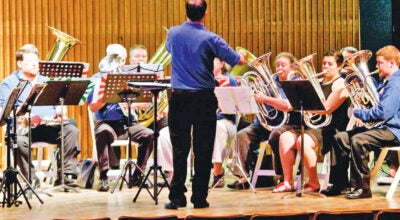Doctor calls painkiller abuse in ERs ‘severe’
Published 10:22 am Thursday, June 18, 2009
IRONTON — A prominent area doctor said Tuesday that brazen attempts by prescription drug addicts to secure powerful painkillers under false pretense at area emergency rooms are at a level that can only be described at “severe.”
Dr. Chad Smith, an emergency room physician at St. Mary’s Medical Center, said attempts to secure addictive painkilling narcotics are becoming so commonplace that the issue has escalated to alarming proportions.
“This has turned into a very extensive problem. A very serious problem,” Smith said when explaining the sometimes hourly occurrences the Huntington, W.Va. hospital faces from addicts attempting to falsify their conditions in the attempt to land powerful painkillers.
Smith’s eye-opening revelation follows a June 14 story in The Tribune that detailed how area ambulance services, including Lawrence County-funded Southeast Ohio Emergency Medical Services, is being abused by area prescription drugs addicts to support their addictions.
Abuse is so out of control that a large percentage of emergency calls to Lawrence County 9-1-1 and EMS are made by prescription drug addicts with the sole purpose of getting fast tracked into area emergency rooms for a possible fix while county taxpayers pick up most of the tab.
Smith gave examples of how so-called patients are starting to arrive at the St. Mary’s emergency room already holding five prescriptions written by five different doctors and still asking for more.
“I see those types of things every day,” Smith said. “But we have to treat everybody as a serious case until we are able to make the diagnosis.”
In another case, Smith explained a recent patient who was admitted for dental pain and after being diagnosed, was prescribed the non-narcotic ibuprofen drug Motrin.
Briefly leaving the patient to grab some additional paperwork, Smith returned only to find the patient gone and the prescription he had just written lying on the hospital gurney.
“We find ourselves in a very tough spot since we don’t have a rapport with the patient,” Smith said while explaining what emergency room doctors has been attempting to curb the problem.
According to Smith, one thing doctors have been doing is reviewing records for patients that make frequent visits to St. Mary’s in the attempt to find a pattern of possible abuse.
He added that checking with the boards of pharmacy in Ohio, West Virginia and Kentucky have made it easier to identify the prescription history of each patient and possible confrontation should the need arise.
Smith also said he “limits” the dosage amounts when he does have to write prescriptions out to emergency room patients.
“Instead of writing a prescription for a large amount, we have started limiting the number of pills.”




